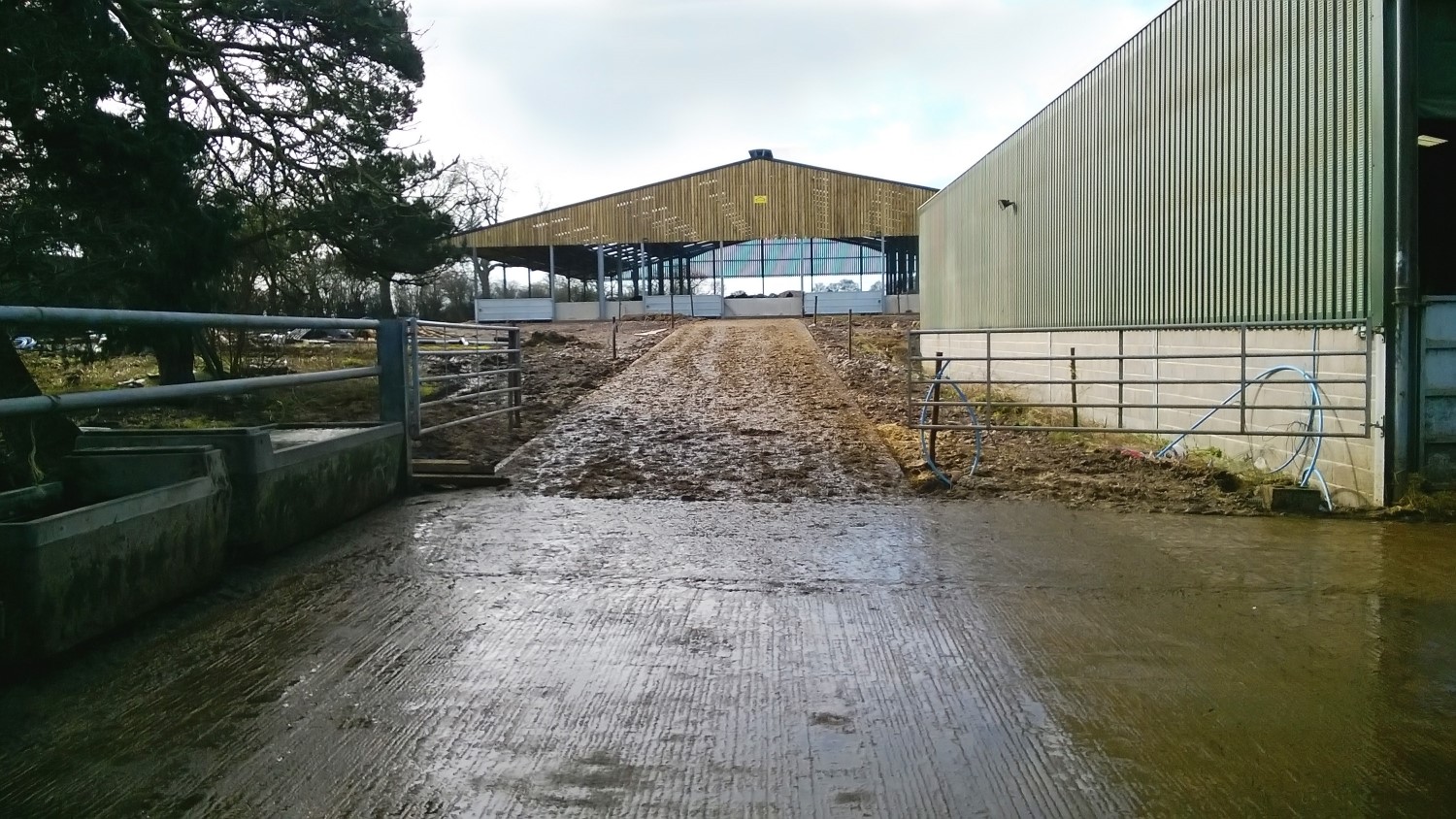- Home
- Knowledge library
- Controlling environmental mastitis in dairy cows by improving cow flow
Controlling environmental mastitis in dairy cows by improving cow flow
Good stockmanship is key to moving cows quickly and quietly around the farm. It is also key to reducing and controlling environmental mastitis.
Back to: Environmental mastitis – Parlour cow flow and milking
Why is good cow flow important?
In the collection area before milking, some teat ends may not be completely closed. Splashing manure, especially if the manure is liquid, makes the udders and teats dirtier and increases the risk of infection.
Calm cows:
- Dung less frequently
- Kick the cups off less often
- Have a better milk let-down
- Can be moved more easily than stressed and anxious cows
Stressed cows:
- Produce adrenalin that interferes with milk let-down
Avoid stressing cows through shouting, use of sticks, dogs or electrified backing gates.
Collecting yard management
Management of the collecting yard is very important for the control of environmental mastitis infections in lactation, largely because teats are more likely to be open at this time. You can reduce the risk of contaminating teat ends by:
- Scraping the collecting yards before or after every milking
- Good drainage of the yard to prevent excessive pooling of liquid
- Keeping the time cows have to wait to be milked to less than one hour (bringing your cows to the parlour in groups may help to achieve this)
- Providing at least 1.5 m² space per cow in collecting yards
- Not using footbaths just before milking
Cows must be able to access the parlour with ease throughout milking, and the milking staff must not use aggressive methods to move slow cows into the parlour, as this will cause stress and affect milk let-down, leading to more pressure on the overall milking routine.
After milking
Immediately after milking, the teat canal is open and can remain open for 30 minutes. The risk of new intramammary infections after milking is high, despite the use of teat dip disinfectant. Look at how you can reduce risk as the cows leave the parlour and for the following 30 minutes, including:
- A safe and non-slip exit from the parlour with no excessive slopes or bends
- Minimise stress on the cows as they leave, with no operator pressure
- A clean yard for cows to go into after leaving the parlour:
- Scrape before and during milking, if necessary
- Good yard drainage so there is never any pooling of liquid
- At least 3 m² per cow in the post-milking yard
- Footbaths used after milking, designed so that cows use them slowly
The picture below shows the post-milking dispersal area and view back to the cow accommodation. Note the clean yard on exit from the parlour, water troughs available (left). However, the ramp to the cubicles should be scraped.

Important
- Provide fresh food and plenty of water trough space after each milking, to encourage the cows to stand for more than 30 minutes after milking
- Scrape collecting yard before and after each milking
Useful links
Reducing the risk of environmental mastitis in dairy cows during milking
If you would like a hard copy of the Control of environmental mastitis guide please contact publications@ahdb.org.uk or call 0247 799 0069.

